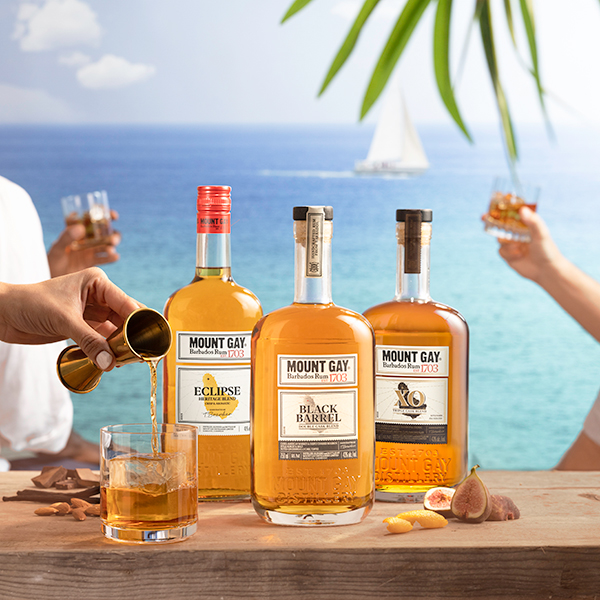There’s no escaping the fact that frozen Margaritas are essentially grown-up slushies. But that doesn’t mean their preparation should be taken less seriously than any other cocktail.
The easiest way to whip up a professional-quality frozen Marg is, of course, investing in the type of machine that bars use. But with costs ranging from hundreds to thousands of dollars, most of us will have to settle for the next best thing: blending a batched Margarita with ice using a standard kitchen blender.
Anyone who’s tried this before will know that homemade frozen Margs can all too easily end up weak and watery. Thankfully, with some well-considered advice from the professionals, it’s remarkably simple to upgrade this drink.
Ready to master the frozen Margarita at home? Here are five top tips from bar industry pros.
What to Do When Making Frozen Margaritas
Use Quality Ingredients
Just like any other cocktail, high-quality ingredients are crucial when mixing a batch of frozen Margaritas.
“You shouldn’t be using a frozen Margarita to cover up the taste of a not very good tequila; you have to start with a quality tequila,” says Cari Hah, a Los Angeles-based bar industry professional who’s worked as a bartender, beverage director, and consultant over the past 10 years. Hah recommends El Tesoro Blanco, which retails for an average $44, according to Wine-Searcher. (For cheaper options, check out VinePair’s roundup of the best tequilas at every price point.)
The next thing that’s absolutely necessary is fresh lime juice, Hah adds. “None of that pasteurized stuff — it needs to be squeezed, preferably by yourself, from a fresh lime,” she says. The cocktail’s third ingredient varies depending on the version of the drink being prepared. Once again, quality is key, Hah says.
For those sticking to the classic formula, seek out an orange liqueur made by a reputable producer, such as Cointreau, Pierre Ferrand, or Grand Marnier. If you’re opting instead for a Tommy’s Margarita, make sure you’re not picking up the cheapest bottle of agave nectar to replace the orange liqueur.
While both the classic and Tommy’s Margarita recipes yield wonderful results, the latter achieves a better texture when blending with ice. “If you don’t add enough sugar to a frozen cocktail it can end up watery,” says Jessica Stewart, bar manager at San Diego’s Fort Oak. With a thicker consistency than simple syrup, agave nectar ensures this won’t happen and also helps balance the overall profile of the drink.
Keep Things Cool
Once you’re well stocked with quality ingredients, it’s time to focus on the preparation of the cocktail. The key consideration here is eliminating any steps that result in a frozen drink that’s lacking in flavor and has a thin consistency.
“Keeping everything cold is the name of the game,” says Jeret Peña, managing partner of San Antonio-based The Boulevardier Group. Rather than blending room temperature ingredients with ice, Peña recommends storing your tequila in the freezer and freezing freshly squeezed lime juice in ice cube trays. When the time comes to blend a batch of Frozen Margs, less ice will be required to achieve the perfect slushy consistency, resulting in a more concentrated flavor.
Fort Oak’s Stewart agrees on the need to chill ingredients prior to blending, but offers an alternative solution. “If you’re having people over and you’re going to be making several rounds of frozen Margaritas, I’d highly recommend that you mix a batch of Margarita mix and keep it in the fridge,” she says.
Stewart’s technique factors in the risk of adding too much ice during the blending process. If the consistency seems too thick, some may be tempted to dilute with a splash of tequila or a squeeze of fresh lime. This could see the cocktail end up with an unbalanced profile. Consider keeping pre-batched, chilled Margarita mix on hand so it’s available if you need to dilute a too-thick round of frozen Margaritas. Batching this mix in advance will also save time if you want to make a second round of drinks for you and your guests, Stewart says.
Introduce Frozen Fruit for Added Flavor
Another method for ensuring your frozen Margarita packs a punch is replacing some of the ice with frozen fruit. This will, of course, alter the cocktail’s profile, but it adds an extra layer of flavor and boosts its appearance.
Los Angeles-based Hah recommends strawberries, mango, pineapple, and watermelon as good fruits to begin with. “You can also change it up and mix different fruits together,” she says.
What to Avoid When Making Frozen Margaritas
Don’t Overdo the Ice
Whether you’re incorporating fruit or simply using ice, Stewart errs on the side of caution when adding the frozen ingredients to the blender.
“Add ice last, starting with a small quantity and adding more until the texture is right,” she says. Much like seasoning a soup or sauce with salt, you can always add more but there’s no way of removing it if you’re too heavy-handed.
That said, it’s also a good idea to make sure you have plenty of ice on hand before you start the process. To estimate how much you will need, Hah recommends filling whatever glass you’re going to serve the drink in with ice (or a mixture of ice and frozen fruit, if you’re using it). Consider that to be one portion, she says.
Don’t Overlook Glassware
After blending a frozen Margarita to the ideal consistency, all that remains is to serve and enjoy. But while some may be tempted to select their glassware based on aesthetics alone, there are other considerations with frozen cocktails.
“I really like a pretty rocks glass for my Margarita but for a frozen drink, you want something with a stem,” says San Antonio-based Peña. Without a stem to hold onto, he explains, the ambient temperature of your hand will melt the frozen Margarita at a faster rate.
If the classic Margarita glass seems too dainty (or tacky) consider instead something with insulation. Or in a pinch, be sure to chill your preferred rocks glass in the freezer for at least 30 minutes prior to serving.

